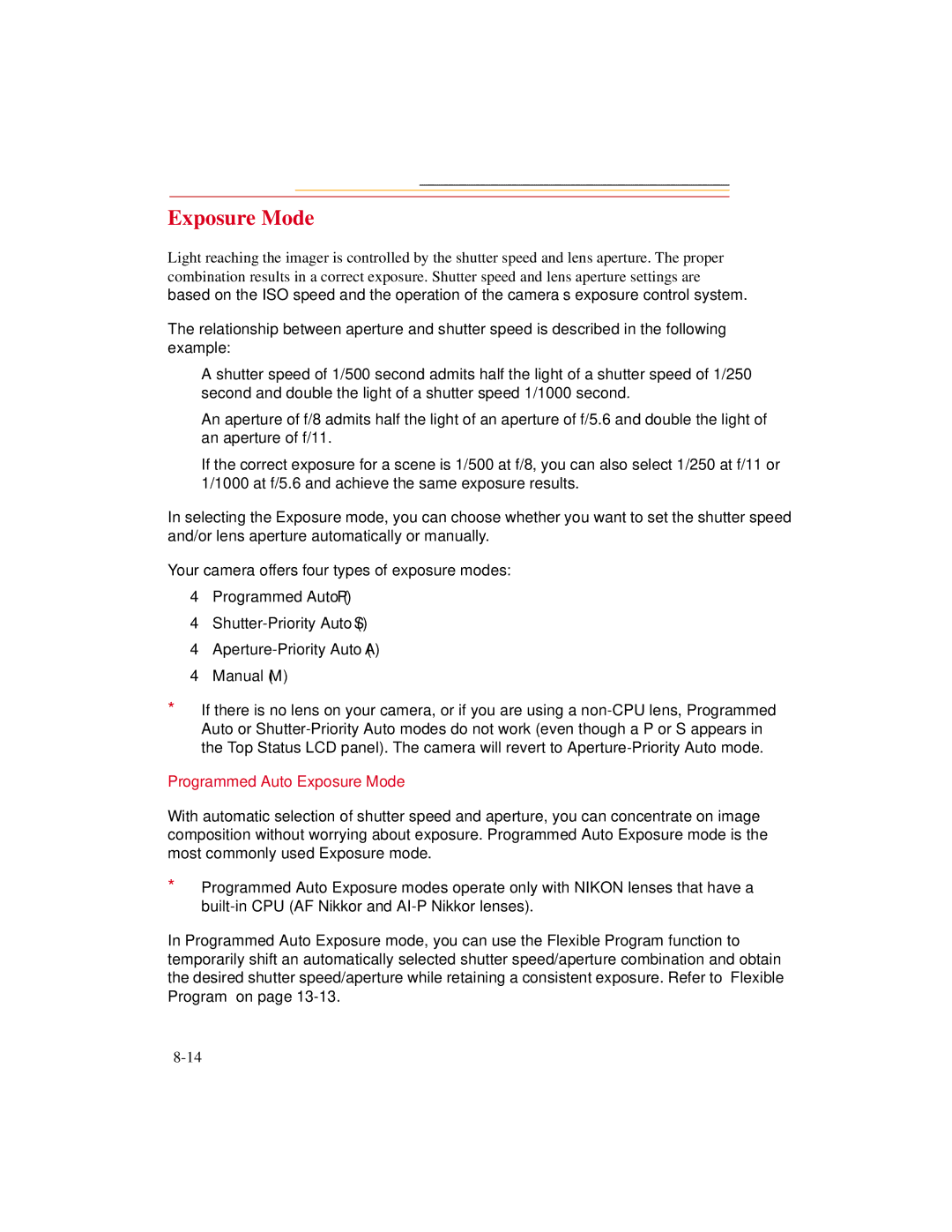Exposure Mode
Light reaching the imager is controlled by the shutter speed and lens aperture. The proper combination results in a correct exposure. Shutter speed and lens aperture settings are based on the ISO speed and the operation of the camera’s exposure control system.
The relationship between aperture and shutter speed is described in the following example:
A shutter speed of 1/500 second admits half the light of a shutter speed of 1/250 second and double the light of a shutter speed 1/1000 second.
An aperture of f/8 admits half the light of an aperture of f/5.6 and double the light of an aperture of f/11.
If the correct exposure for a scene is 1/500 at f/8, you can also select 1/250 at f/11 or 1/1000 at f/5.6 and achieve the same exposure results.
In selecting the Exposure mode, you can choose whether you want to set the shutter speed and/or lens aperture automatically or manually.
Your camera offers four types of exposure modes:
✔Programmed Auto (P)
✔
✔
✔Manual (M)
☛If there is no lens on your camera, or if you are using a
Programmed Auto Exposure Mode
With automatic selection of shutter speed and aperture, you can concentrate on image composition without worrying about exposure. Programmed Auto Exposure mode is the most commonly used Exposure mode.
☛Programmed Auto Exposure modes operate only with NIKON lenses that have a
In Programmed Auto Exposure mode, you can use the Flexible Program function to temporarily shift an automatically selected shutter speed/aperture combination and obtain the desired shutter speed/aperture while retaining a consistent exposure. Refer to “Flexible Program” on page
